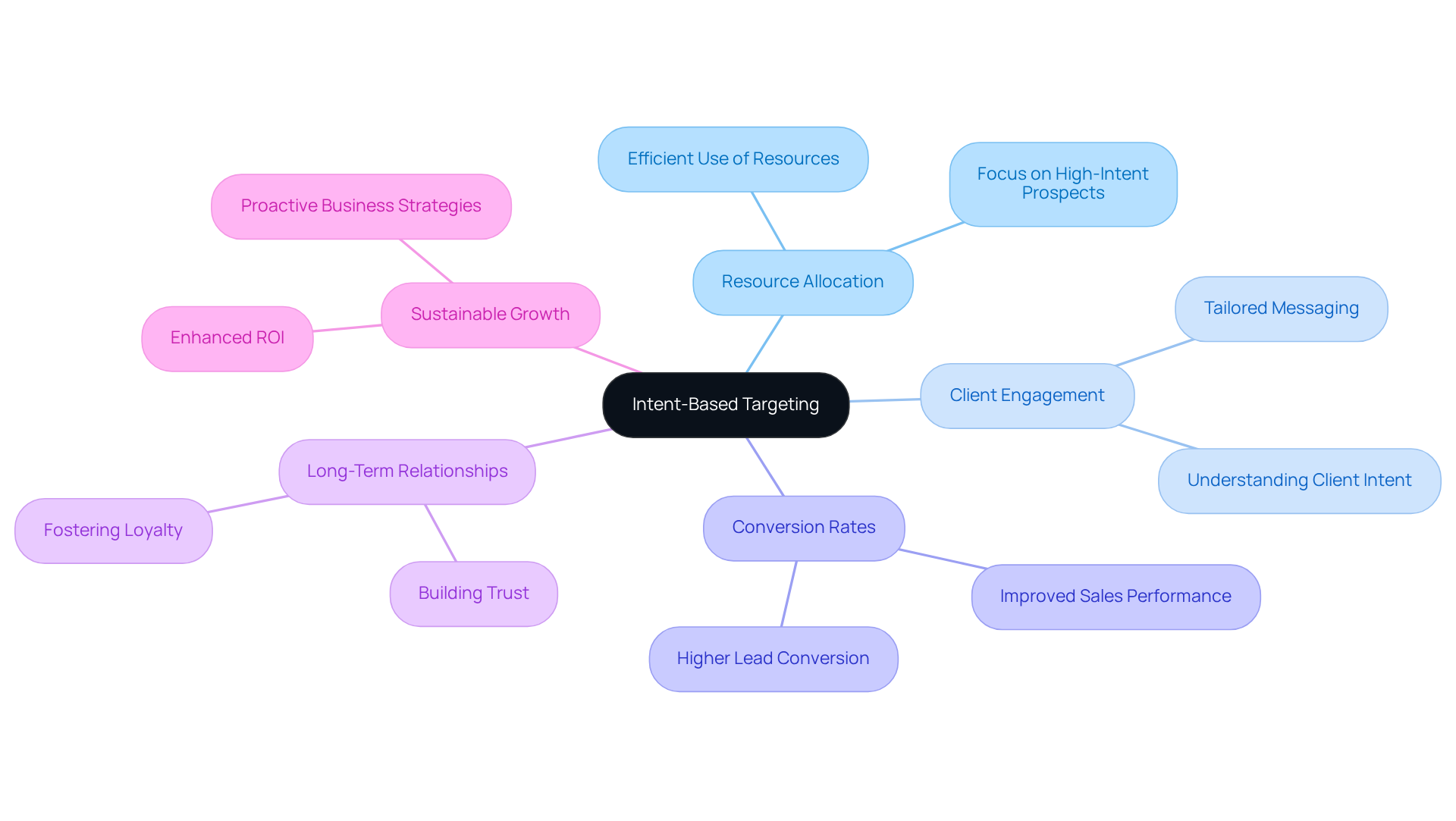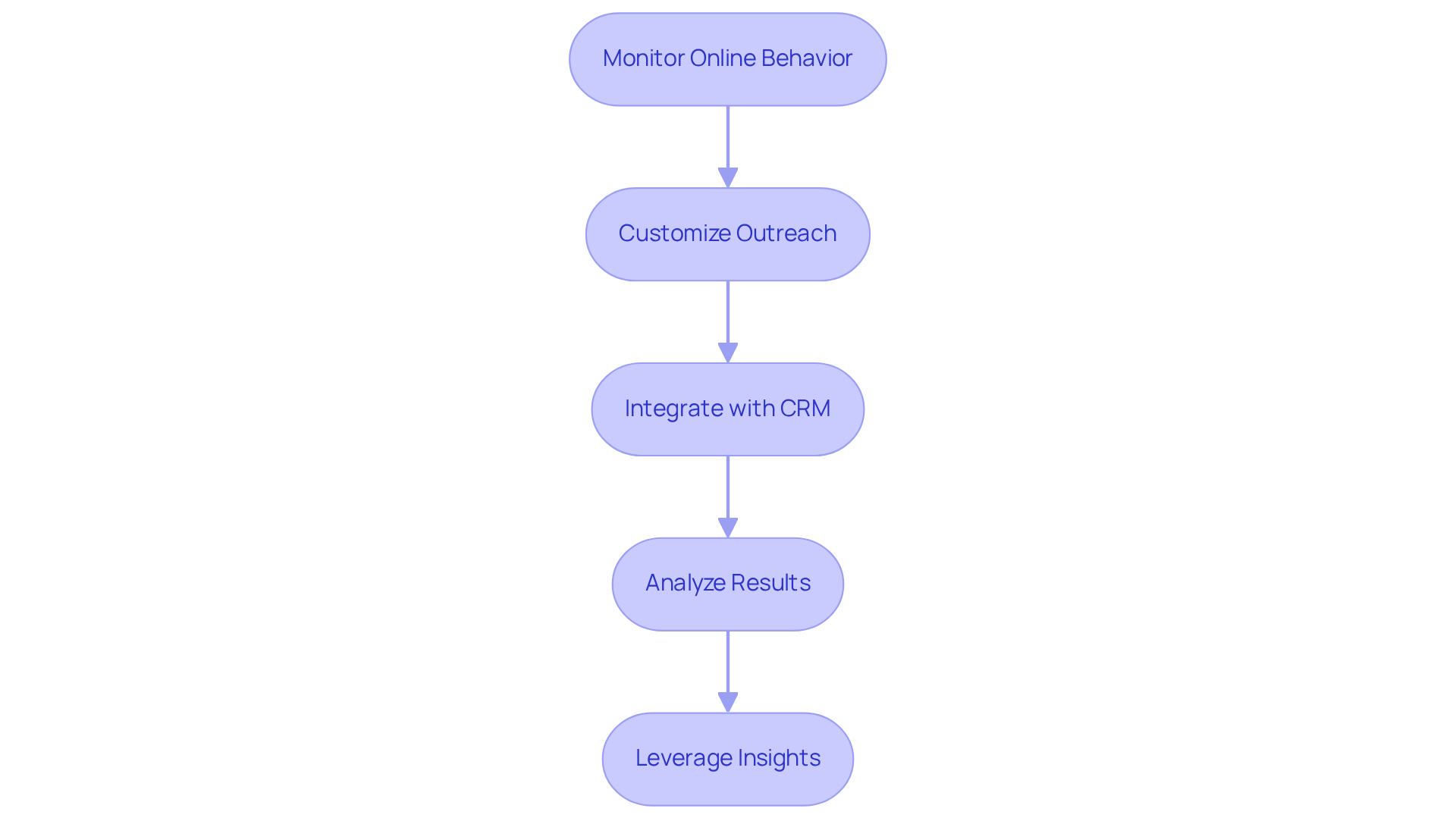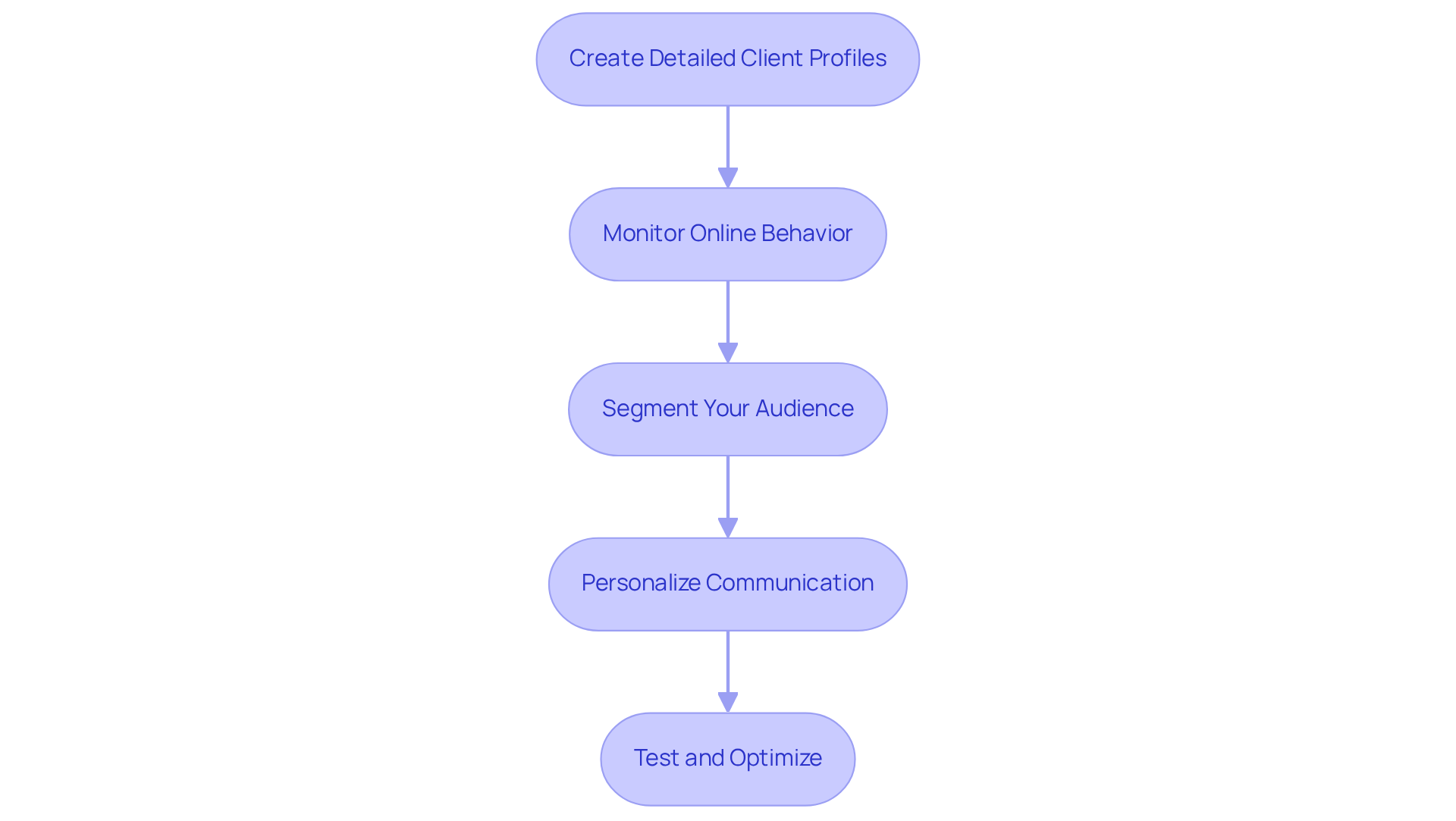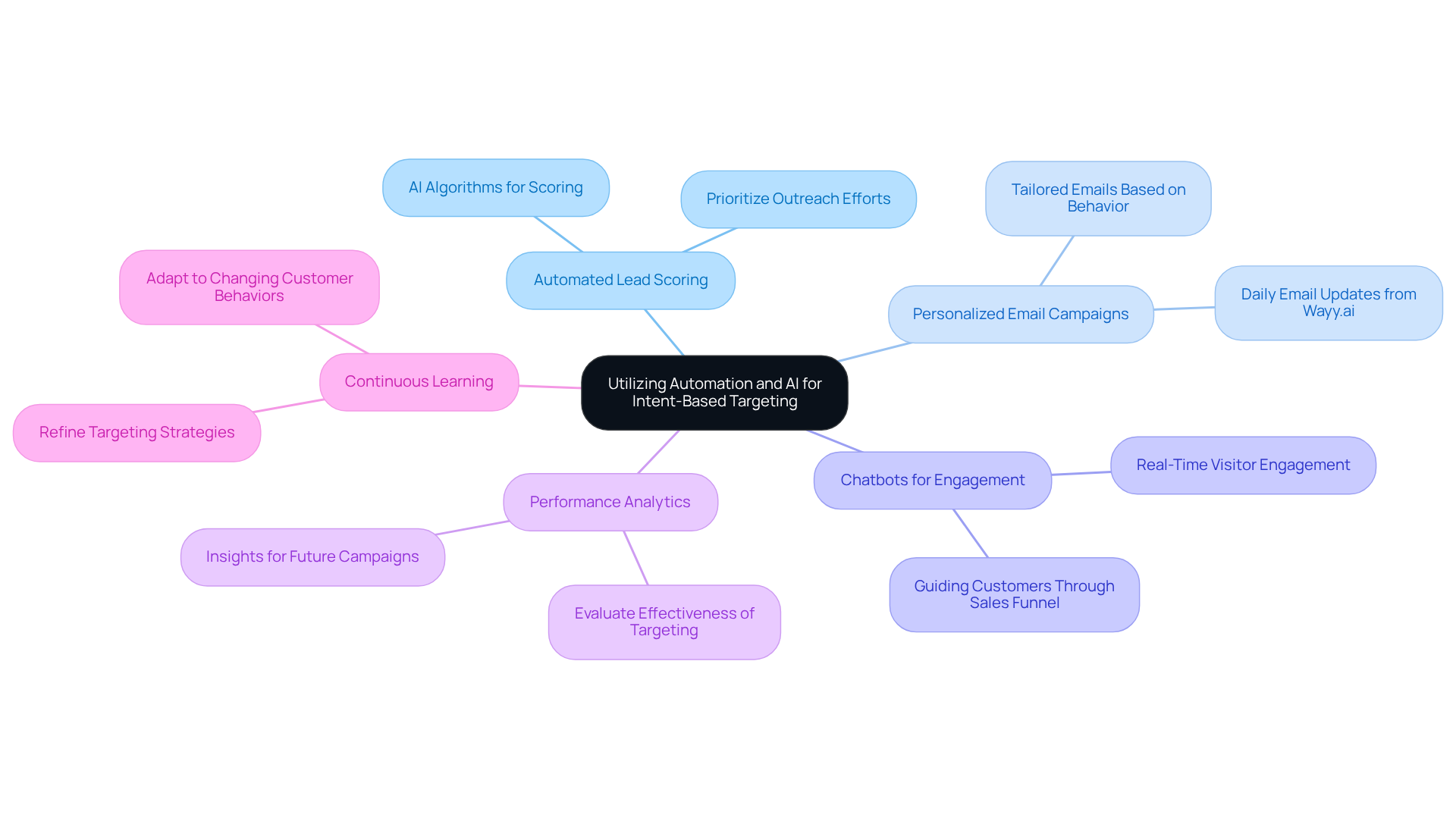Overview
Effective intent-based targeting in small businesses is about more than just strategy; it's about understanding and connecting with potential clients based on their expressed interests and behaviors. This approach not only leads to improved conversion rates but also fosters sustainable growth. By leveraging intent data and automating processes, small businesses can truly tailor their marketing efforts. Imagine enhancing customer engagement in a way that feels personal and meaningful. Ultimately, this can drive sales more effectively, making your business thrive in a competitive landscape.
We understand the challenges you face as a small business owner. By embracing these strategies, you can create a more engaging experience for your clients. Think about how your marketing efforts can resonate more deeply with your audience. Together, we can achieve success by focusing on what truly matters: the needs and interests of your customers. Let's take the steps needed to ensure your business not only survives but flourishes.
Introduction
Intent-based targeting has emerged as a transformative strategy for small businesses, allowing you to connect with potential customers based on their expressed interests and behaviors. This approach not only streamlines your marketing efforts but also significantly boosts conversion rates by focusing on prospects who are already inclined to purchase. Yet, we understand that many small enterprises grapple with how to effectively implement these strategies in a competitive landscape.
What key steps can help unlock the full potential of intent-based targeting and drive sustainable growth together? Let's explore this journey to success.
Define Intent-Based Targeting and Its Importance for Small Businesses
A strategic practice known as intent-based targeting allows you to identify and engage potential clients based on their expressed interests and behaviors. For small enterprises like yours, this method is not just beneficial—it's essential. It enables you to distribute your resources more effectively, focusing your efforts on prospects who genuinely intend to buy. By utilizing intent-based targeting to understand client intent, you can tailor your messaging and outreach, leading to significantly improved conversion rates.
Consider how this strategy not only enhances client engagement but also fosters long-term relationships, ultimately driving sustainable growth. Small enterprises often see enhanced ROI on their marketing efforts when they embrace intent-based targeting. This approach allows you to who are already in the consideration stage of their purchasing journey.
Together, we can navigate these challenges and build a marketing strategy that resonates with your audience. By prioritizing intent-based targeting, you are proactively ensuring that your business thrives in a competitive landscape. Are you ready to make this important shift? Let's explore how we can implement this strategy effectively for your unique needs.

Leverage Intent Data to Enhance Customer Engagement and Drive Sales
Leverage Intent Data to Enhance Customer Engagement and Drive Sales
Have you ever wondered how to better connect with your customers? Intent-based targeting leverages intent data to offer valuable insights into a customer's likelihood to purchase, based on their online behavior such as website visits, content consumption, and social media interactions. For small businesses, this information can be a game changer. By using intent-based targeting to identify when potential buyers are actively exploring products or services similar to yours, you can create meaningful connections that truly resonate.
For example, if a potential client frequently visits pages related to a specific product, you have a unique opportunity to tailor your outreach to directly address that interest. By leveraging intent-based targeting to provide personalized messages or offers at just the right moment, you can significantly enhance your conversion rates.
To effectively leverage intent data, consider these steps:
- Monitor Online Behavior: Keep an eye on which products or services prospects are researching.
- Customize Outreach: Tailor your messages based on the specific interests of potential clients.
- Integrate with CRM: Use CRM systems to track client interactions and refine your targeting strategies.
- Analyze Results: Regularly review conversion rates and adjust your approaches accordingly.
Moreover, integrating intent-based targeting with CRM systems allows for more effective monitoring of customer interactions. This not only helps you enhance your strategies for intent-based targeting over time but also fosters meaningful connections with your clients. By being attentive to emerging purchase intent signals, small businesses can utilize intent-based targeting to drive sales growth more effectively.
With , you can receive daily email updates featuring key metrics, such as how many leads were reached, who expressed interest, and how your conversion rates are improving. For just $99, Wayy.ai enables you to establish over 60 target client connections each month, making it a cost-effective solution for harnessing intent data to drive your sales.
Start using Wayy.ai today and let’s revolutionize your client acquisition approach together!

Implement Effective Strategies for Intent-Based Targeting in Your Marketing
To implement effective strategies for intent-based targeting, small businesses should start by defining their target audience and understanding their unique pain points. Let’s explore some actionable steps that can guide you through this process:
- Create Detailed Client Profiles: Begin by utilizing analytics to develop comprehensive profiles of your ideal clients. Consider their demographics, interests, and purchasing behaviors. This foundational step enables you to tailor your marketing efforts effectively, ensuring that you connect with your audience on a deeper level.
- Monitor Online Behavior: Take advantage of tools that track user interactions across various platforms to gather intent information. Analyzing website traffic, social media engagement, and email open rates will provide valuable insights into customer preferences and behaviors, helping you understand their needs better.
- Segment Your Audience: Based on the data collected, categorize your audience into distinct groups. This segmentation allows you to customize your messaging and offers, ensuring they resonate with each group's unique needs and concerns.
- Personalize Communication: Craft personalized messages that align with the specific interests and pain points of each segment. When customers feel valued and understood, engagement rates significantly increase, fostering a stronger connection with your brand.
- Test and Optimize: Continuously experiment with different marketing approaches and optimize your strategies based on performance metrics. Regular testing ensures that you effectively reach your target audience and adapt to their shifting preferences.
By following these steps, small enterprises can improve their marketing effectiveness with intent-based targeting. Together, we can , ultimately leading to greater success for your business.

Utilize Automation and AI to Streamline Your Intent-Based Targeting Efforts
Incorporating automation and AI into your processes can truly streamline outcomes for small businesses like yours through intent-based targeting. Let’s explore some compassionate ways to utilize these technologies:
- Automated Lead Scoring: Imagine using AI algorithms to automatically score leads through intent-based targeting based on their intent data. This helps you prioritize outreach efforts, ensuring that your time is spent effectively.
- Personalized Email Campaigns: Consider implementing automation tools that send tailored emails based on client behavior. This ensures timely and relevant communication. With , you can receive daily email updates that provide key metrics—like how many leads were reached, who showed interest, and the conversion rate—empowering you to enhance your sales performance.
- Chatbots for Engagement: Think about deploying AI-driven chatbots on your website. They can engage visitors in real-time, answering questions and guiding them through the sales funnel, making your customers feel valued and supported.
- Performance Analytics: Utilizing AI analytics tools can help you evaluate the effectiveness of your intent-based targeting approaches. With insights that inform future campaigns, Wayy.ai tracks leads and interest levels, giving you a clear picture of what’s working every day.
- Continuous Learning: Leverage machine learning capabilities to refine your targeting strategies over time. This ensures that your efforts evolve with changing customer behaviors and preferences, keeping you connected to your audience.
By embracing these strategies, you can navigate the complexities of modern marketing with confidence, knowing that you are supported every step of the way.

Conclusion
Intent-based targeting emerges as a critical strategy for small businesses seeking to connect with potential clients who are genuinely interested in their offerings. By focusing on the expressed interests and behaviors of prospects, businesses can optimize their marketing efforts, ensuring that resources are allocated effectively to drive conversions and foster long-term relationships.
To implement intent-based targeting effectively, consider these key strategies:
- Leverage intent data to enhance customer engagement
- Create detailed client profiles
- Personalize communication
- Utilize automation and AI to streamline processes
Each of these strategies contributes to a more tailored approach that resonates with potential buyers, ultimately leading to improved engagement and higher conversion rates.
Embracing intent-based targeting is not merely an option; it is a necessity for small businesses aiming to thrive in a competitive landscape. By adopting these best practices, your organization can enhance marketing effectiveness and build stronger connections with your audience. Taking action now to implement these strategies will pave the way for sustainable growth and success in the future. Together, we can navigate these challenges and achieve the results you desire.
Frequently Asked Questions
What is intent-based targeting?
Intent-based targeting is a strategic practice that allows businesses to identify and engage potential clients based on their expressed interests and behaviors.
Why is intent-based targeting important for small businesses?
Intent-based targeting is essential for small businesses as it helps distribute resources more effectively, focusing efforts on prospects who genuinely intend to buy, leading to improved conversion rates and enhanced ROI on marketing efforts.
How does intent-based targeting improve client engagement?
By understanding client intent, businesses can tailor their messaging and outreach, which enhances client engagement and fosters long-term relationships.
What stage of the purchasing journey does intent-based targeting focus on?
Intent-based targeting focuses on prospects who are already in the consideration stage of their purchasing journey.
How can small businesses implement intent-based targeting effectively?
Small businesses can implement intent-based targeting by developing a marketing strategy that resonates with their audience and prioritizing understanding client intent to connect with potential customers.




